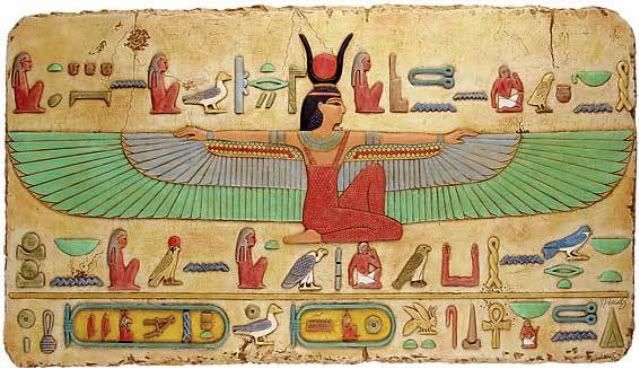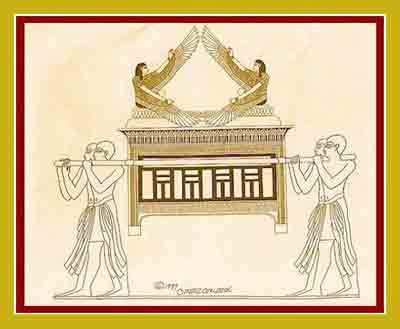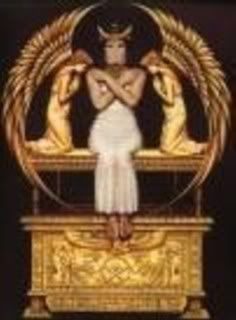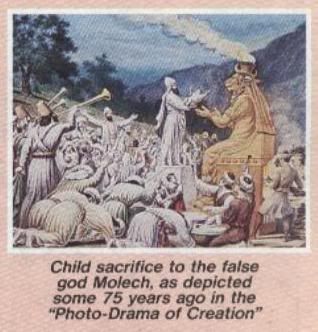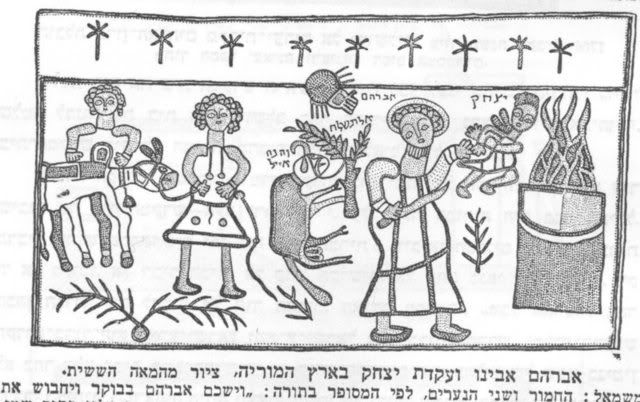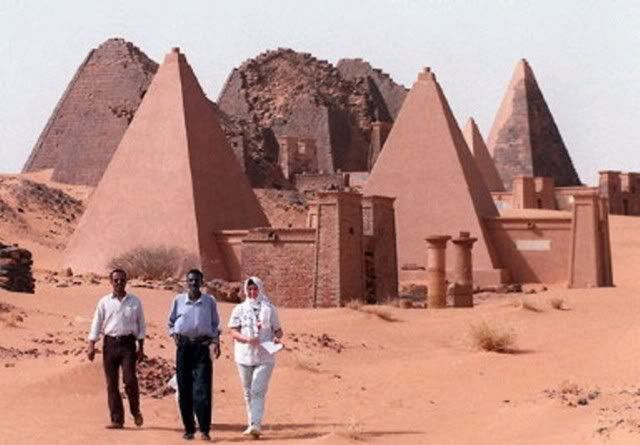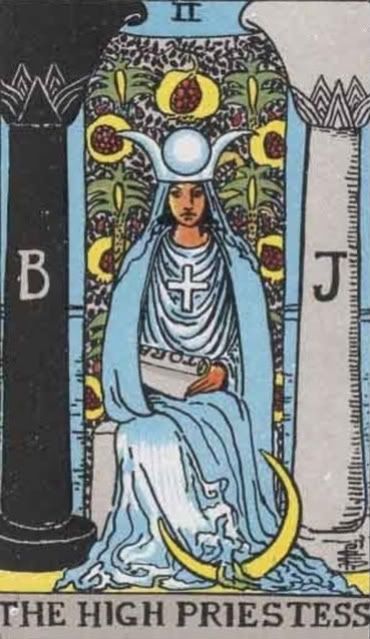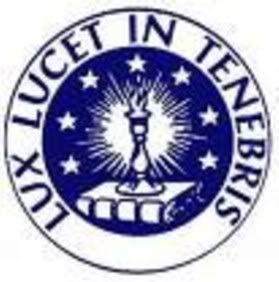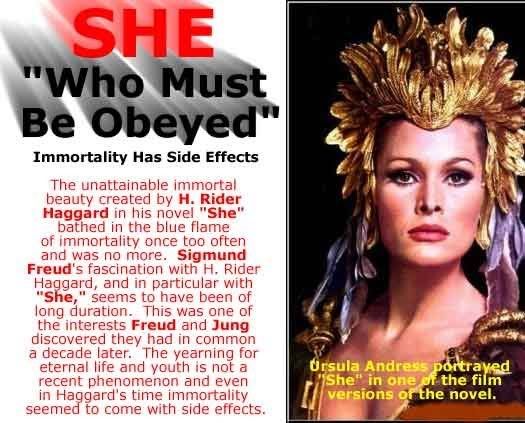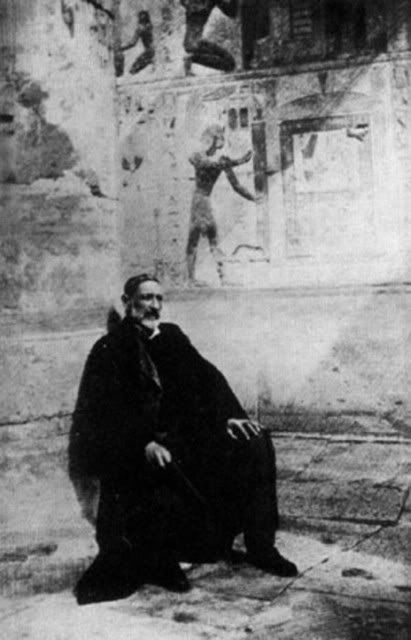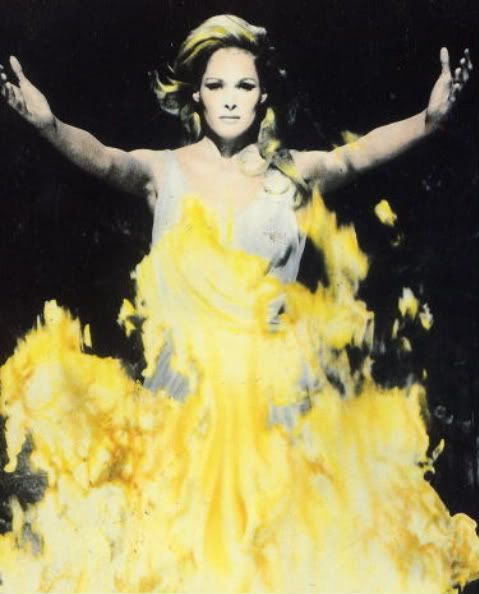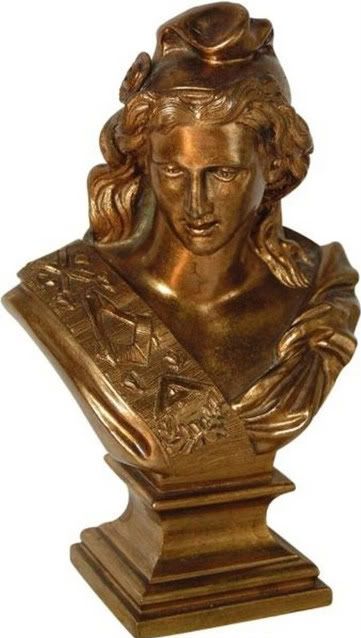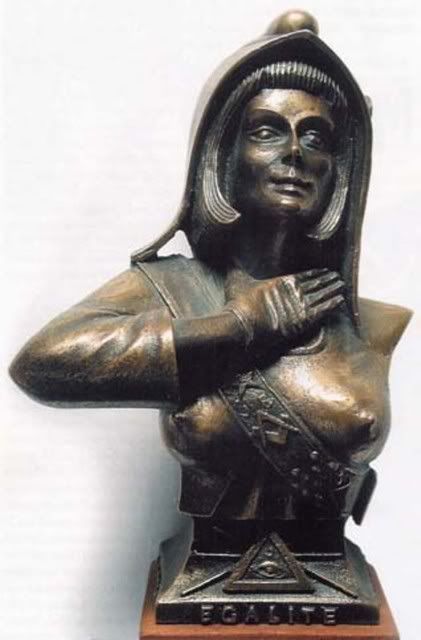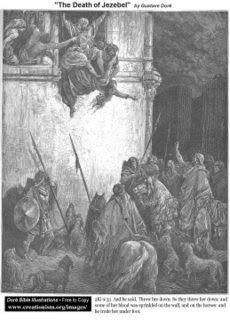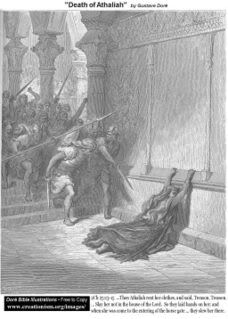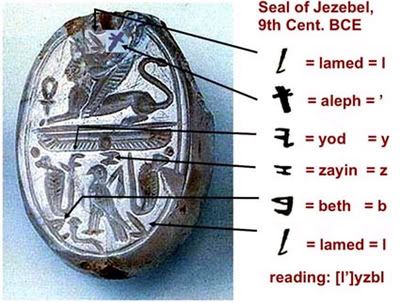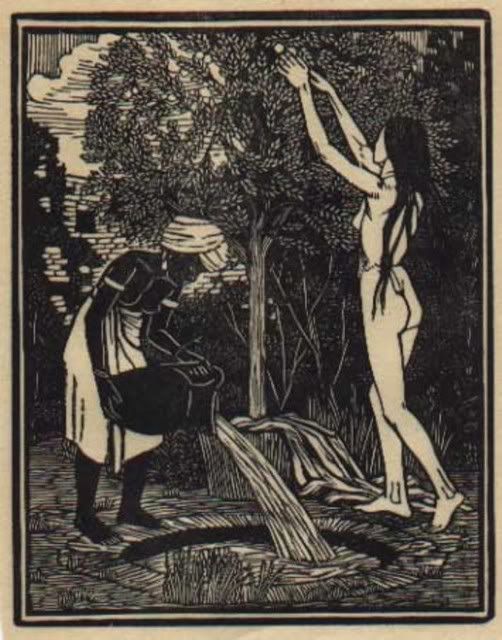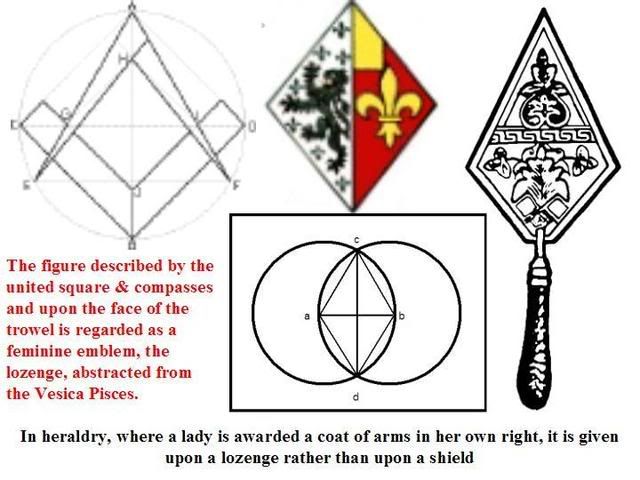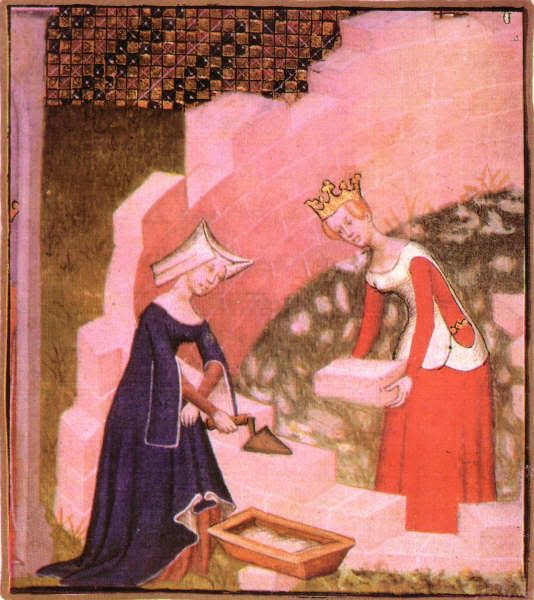|
|
Post by Tamrin on Jul 14, 2008 7:20:16 GMT 10
PoliticsIn considering the cult of Asherah we need to bear in mind that we are dealing with the religion of the pre-exiled, pre-rabbinical and even pre-Judaic Hebrews, whose degree of differentiation from their Canaanite neighbours is problematic, over-stated and to some extent contrived. Around the time the canonical Torah was created, there was a prevailing idea of there being a syncretism of gods: Amun, Zeus, Jupiter, etc., being considered to be more or less identical. And while the oneness of the male gods was in a sense exclusive (jealous gods), the oneness of the goddess was all inclusive. In The Golden Ass (Lucius Apuleius, c.165 CE, eleventh book) we read: I am she that is the natural mother of all things, mistress and governess of all the elements, the initial progenitor of worlds, chief of powers divine, queen of heaven, the principal of the gods celestial, the light of the goddesses: At my will the planets of the air, the wholesome winds of the seas, and the silences of hell are disposed; my name, my divinity is adored throughout all the world in diverse manners, in variable customs and in many names, for the Phrygians call me the mother of the gods: the Athenians, Minerva: the Cyprians, Venus: the Candians, Diana: the Sicilians, Proserpina: the Eleusians, Ceres: some Juno, others Hecate: and principally the Ethiopians which dwell in the Orient, and the Egyptians which are excellent in all kind of ancient doctrine, and by their proper ceremonies are accustomed to worship me, do call me Queen Isis. 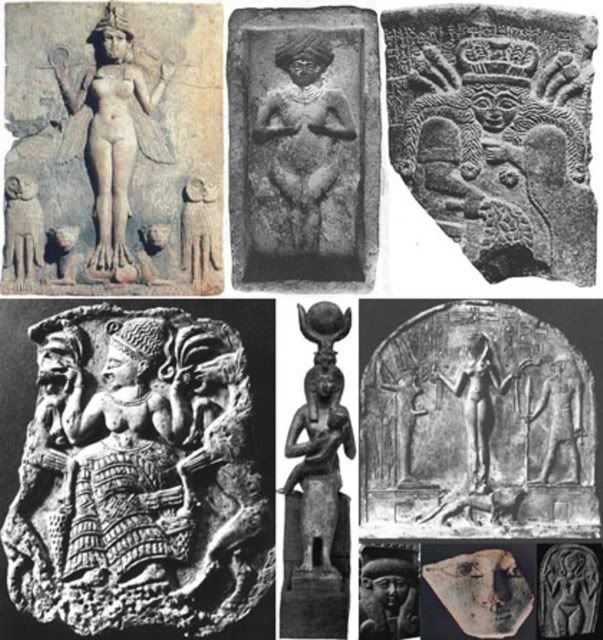 Ironically, "Isis" was the Greek form of her name, the Egyptians and Ethiopians actually called her " Au'Set" or " Ashesh" (of which, "Asherah" may be an Hebraic form). Despite this "oneness," forms of worship varied from place to place and the choice of forms had political overtones. The one fact we overlook at our peril is that, at the height of Egypt’s power, Canaan was a province of Egypt, (see Steindorff & Steele’s When Egypt Ruled the East) and even after Egypt’s power waned it still claimed Canaan as its own. In reference to this, their province of Retjenu, the Egyptian’s did not use the conventional designation indicating a foreign land; rather it was designated “god’s land”, presumably indicating the personal oversight by the Pharaoh as the god/king or by his personally nominated Viceroy, as governor and judge. The supreme god of the Egyptian pantheon was Amen, who name means the “unseen” god, although paradoxically the Egyptians managed to depict him. Likewise, the Israelites originally depicted YHWH, their “unseen” god. They typically portrayed him wearing a crown similar to that of the white crown of Upper Egypt (associated with Amen, a term still preserved in Judeo-Christian liturgy) and addressed him as El or Ba’al: Both terms sharing an etymological identity and both meaning “Lord” (both Saul and David had sons whose names incorporated “Ba’al”, showing the original orthodoxy of the name).  Incidentally we should note that any blood sacrifices and burnt offerings were associated with the male god of the cult, including YHWH (consider Jephthah’s daughter). The worst abominations specifically laid at the door of Asherah were the offering of libations, the baking of cakes and the weaving of hangings. Albeit, there were innuendoes that among her sacraments were sexual “improprieties,” but then, they would say that, wouldn’t they? The identity of her cult-object with the Egyptian dejet pillar and her later worship in Egypt as Qadesh suggests the worship of Asherah had more in common with Isis (the Greek rendering of her Egyptian name, Au’Set) than with, for instance, that of the Babylonian Ishtar, but then all goddesses share some identity. Only in Egypt’s Third Intermediate Period, when the VSL describes it as becoming a bruised or broken reed, and when the Assyrians and later the Babylonians became the new regional superpowers, do we find the Israelites and the Judeans fudging the awkward origins of their religion. Creating a written denunciation of their original religion (the Book of Deuteronomy, the first biblical text to be officially sanctioned) thereby legitimising the suppression which they had already begun; and imposing a false and novel differentiation between the Egyptian-like Ba’al, having a consort and depicted by images, and “their” universal god YHWH, (YHWH is an appellation found elsewhere in the Levant). They threw out and destroyed the incriminating evidence in the temple and slaughtered the Kadosh, the priests and priestesses of their once holy but later embarrassing and politically dangerous cult, imposing a centralised and politically neutral form of worship. Despite all their groveling, Assyria prevailed against Israel and Babylon against Judea. The remaining worshippers of Asherah had become the new heretics: Arguably, their religion survived as a secret, Kabbalistic, tradition among the Jews, revived by the Gnostics (see Freeke & Gandy’s Jesus and the Lost Goddess), suppressed at the Council of Nicea and again preserved as a secret tradition among the Albigensians.
|
|
|
|
Post by Tamrin on Jul 14, 2008 7:20:57 GMT 10
I Am That I Am‘Asherah’ is the feminine form of ‘Asher’ (‘ah’ is a feminine suffix). ‘Asher’ has several meaning, all positive, such as ‘happy’. It appears to be a word of such all encompassing virtue that it may be used in the abstract to refer to ‘the way, the truth and the light’ as with ‘Ma’at’ in Egyptian and ‘Tao’ in Chinese. Among the meanings of ‘Asher’ is, ‘straight’ and ‘level,’ from whence the word ‘Ashlar’ is derived for a stone properly prepared for building purposes. Similarly, it also means ‘stability,’ an import of the word having an important Freemasonic significance. Patricia Monaghan, in The Book of Goddesses and Heroines, tells us (p.35) that ‘Asherah’ was: .... a name that implied not only the [upright and] moral rectitude she demanded of her followers but also the upright posts or living trees in which they perceived her essence. ‘Asher’ can also be used as a relative pronoun. For instance, what has been interpreted as the name of God as revealed to Moses in Exodus 3:14, as ‘ehyah asher ehyah’ or ‘I am that I am,’ can also be read as ‘I am “ASHER” I am’ (with the final 'ehyah' perhaps suggesting the feminine suffix "ah"). Indeed the word " Shekinah," indicating the presence of God, is unambiguously feminine. Taken at face value, “ I am that I am” is a meaningless prevarication. Where we find a fuller and more meaningful statement of this sort is from the temple of Isis at Sais, where we read: " I am that which is, which hath been, and which shall be; and no man has ever lifted the veil that hides my Divinity from mortal eyes." This reminds us that Moses (an incomplete Egyptian name), if he existed, was instructed in the mysteries of Egypt and his contribution to the pre-Judaic Hebrew religion was similarly 'Egyptian.' For instance, his Decalogue can be read as a paraphrasing of the negative confessions in the several books of Coming Forth by Day (a.k.a., Book of the Dead).
|
|
|
|
Post by Tamrin on Jul 14, 2008 7:21:41 GMT 10
AbominationsApart from implications of matters sexual, which may or may not be simply part of a tiresomely typical program of salacious defamation, Asherah’s only ‘abominations’ specified in the Bible appear to have involved her worshippers making cakes; offering libations; burning incense; smelling branches; and weaving hangings for her image. These devout acts, described in the Bible as shocking and appalling, angered and provoked the hatred of her jealous rival, who had formerly been her son and later her consort, El or Yahweh. For instance, we are told (Jer. 7:18): The children gather wood, and the fathers kindle the fire, and the women knead [their] dough, to make cakes to the queen of heaven, and to pour out drink offerings unto other gods, that they may provoke me to anger. Blood sacrifices and burnt offerings were not in her domain, but those of her consort and they continued to be a part of the cult of Yehweh, even after he was differentiated from Ba’al. A biblical furphy which has gained much credence is that of child sacrifices to Moloch. The word ‘Moloch’ refers not to a god but to a 'kingly' burnt offering, to any god, including Yahweh (Olyan, Asherah and the Cult of Yahweh in Israel, pp.11/13). Burnt offerings continued to be part of orthodox Jewish worship long after the suppression of Asherah, (who did not require blood sacrifices). Patrick Tierney, The Highest Altar: The Story of Human Sacrifice (p.395), tells us: Although Moloch has become one of the great demons of Judeo-Christian literature, there’s strong evidence that Moloch was not a demon at all but simply the name for child sacrifices dedicated to Yahweh. Human sacrifice was regarded only as being excessively zealous in the worship of Yahweh, in going beyond that which God required (Micah 6:7), rather than being wrong in and of itself. Abraham is celebrated for his willingness to sacrifice his son, Isaac, to his God, "Yahweh" (Genesis 22:2/10) and despite what many have been led to believe, that was not the last instance of such devotion. Consider, for example, Jephthah’s sacrifice of his daughter, to give thanks for his victory (Judges 11:30/40). Jephthah’s only regret was that the fate fell upon his own child: Anyone else’s child would have been fine! Moreover blood sacrifices and burnt offerings (albeit of animals) continued to be part of orthodox Jewish worship up until the destruction of the second temple and presumably would resume if the temple were rebuilt. Distasteful as the subject may be, the topic of human sacrifice in the Bible needs to be unfolded in any general discussion of the pre-Judaic, Hebrew religion and particularly when discussing the worship of Asherah. The reason being is that the mention of Asherah worship often conjures up this abomination in the minds of those who only think they know what the Bible says and who think that She condoned it, in opposition to YHWH. In contrast, we read (Exodus 13:1/2) And the Lord spake unto Moses, saying, ‘Sanctify unto me all the firstborn, whatsoever openeth the womb among the children of Israel, both of man and of beast: it is mine.’ And (Isaiah 30:33): For Tophet [human sacrifice] is ordained of old; yea for the king it is prepared: he hath made it deep and large: the pile thereof is fire and much wood; the breath of the Lord, like a stream of brimstone, doth kindle it. In Nigel Davis’ book, Human Sacrifice, he writes (p.61), " Examples can be found in the Old Testament to show that, for all the apologists’ denials, human offerings were not uncommon during the whole history of the Jewish state" (he also provides many examples, pp.60/72). To explore the many examples of individual sacrifice may be gratuitous and unnecessary in the face of the wholesale sacrifice which the conquest of Canaan was said to entail. Abraham and Isaac The Biblical account has it that, in their conquest, Joshua and his followers, by command of their God, were to slaughter every man and woman and, in some cases, even the children and animals. The first half of the Book of Joshua is a litany of slaughter, done at the behest of YHWH. For example (6:21): " And they utterly destroyed all that was in the city [Jericho], both man and woman, young and old, and ox, and sheep and ass, with the edge of the sword." Their 'leniency' in sparing some Canaanites is said to have cursed the Hebrews for generations to come. Note, this account is contradicted by the archaeological evidence. Even so, the Biblical writers obviously thought this was how the conquest should have happened. In the same book, we read of the kings of the defeated cities each being hung on a tree until evening (e.g. 8:29). If the life of Jesus was a fulfilment of the Law, his fate suggests a curious association. Remember too, I Kings 18:40, with the 450 priest of Ba’al whom Elijah had slaughtered, (strangely, the 400 priest of Asherah, also present, appear to have been spared on that occasion). The site is still called ‘El Muhraqa,’ meaning ‘The Place of Sacrifice’ (Tierney, The Highest Altar, p.387). Also remember Josiah’s slaughter of the priests of the high places (II Kings 23:20). All this was done in the name of his new religion. Elijah competing with the Prophets of Ba'al Asherah, by contrast, was associated with constructive forces and was the patron of artisans, such as masons. One of Her titles was ‘ She who Builds’ and She is said to have made the bricks for the heavenly temple. In Isaiah 41:2/7, soon after asking the significant question, ‘ Who raised up the righteous man from the east…?’, we read of the construction of a cult object, condemned elsewhere in the Bible (Jeremiah 10:3/5): They helped every one his neighbor; and everyone said to his brother, Be of good courage. So the carpenter encouraged the goldsmith, and he that smootheth with the hammer him that smote the anvil, saying, It is ready for the sodering; and he fastened it with nails, that it should not be moved. Beginning with images of Asherah, the common fate of so-called heretics has been to be accused of licentiousness, (lest the finer theological objections are lost on the populous), and to be broken, burnt and scattered. Thus, has been the fate of the ‘Holy Ones,’ the Kadosh and Kadoshah, (Asherah’s priests and priestesses); Gnostics; Early Christians; Hypatia; The Cathars, Knights Templar, Waldensians and finally remembered among Master Masons.
|
|
|
|
Post by Tamrin on Jul 14, 2008 7:22:19 GMT 10
Opening of the Mouth CeremonyThe first step in the mummification process involved an incision which, while necessary, the Egyptians considered to be an act of defilement. The ‘ruffian’ who performed the deed, ran off and was pursued by the mourners. When the mummy was properly prepared, priestesses representing the goddesses Isis and Nephthys unsuccessfully attempted to raise the body. Anubis then succeeded in raising the body using a special grip (some say a 'lion's grip'). Whereupon a priest used am adze (a type of chisel) to open the mouth and, as gases escaped from the mummy, the priest exclaimed ‘maat heru’ or ‘maâ kheru’ , meaning, among other things, ‘true of voice,’ 'S/He whose voice must be obeyed,' or even 'So Mote it Be.' All this would seem all too familiar to any Master Mason. A variation of the cermony was performed hoping to "vivify" statues and to create a link between living theophanies and the deities they personified. 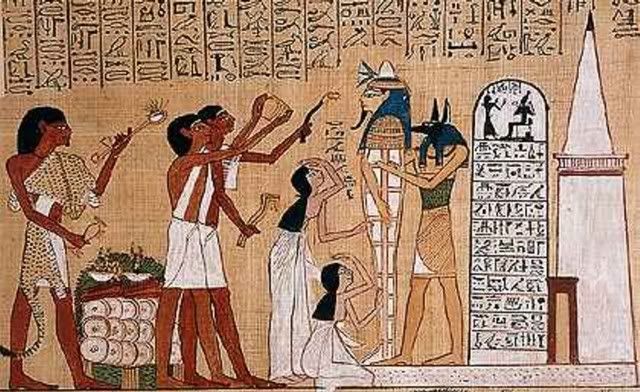 At first sight, the main objection to Desaguliers and others using such an archetypal ceremony as a basis for the third degree ceremony is that it was introduced before Champollion had deciphered the Rosetta Stone. However, there were several avenues by which such knowledge could be communicated, especially among groups having so-called ‘heretical’ links, these include: * Arab scholars had deciphered the hieroglyphs almost a thousand before Champollion. See: Ancient Egypt in Medieval Arabic Writings, by Okasha El-Daly * The Rites of Isis had spread throughout the Roman Empire, rivaling the Christian and Mithraic religions. Its Words of Power were Egyptian. * The Coptic liturgies retained much of the ancient Egyptian language. * Egyptian culture survived in Kush several centuries beyond the dawn of Christianity. Even after its seat of power had been pushed south to Ethiopia and Judaism and then Christianity became the state religions, many Egyptian forms were retained, as they did not regard the ancient Egyptian religion as a rival religion, but saw it as a prefiguring of both Judaism and Christianity. 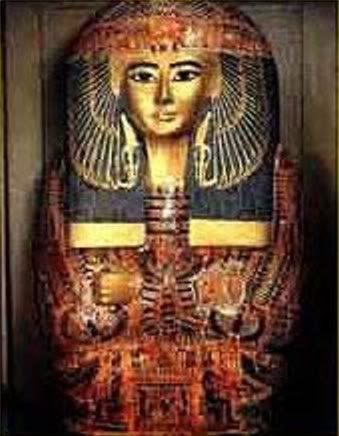 Makera Mutemhet Makera Mutemhet, God's Wife of of Amun (a precursor to the office of Divine Adoratrice) A very similar word to that of "maâ kheru", is "Ma'akera" (born by a number of royal women and arguably a feminine form of the former word). Although pronounced 'Makera' ('Kamara' according to some early Egyptologists) the hieroglyphs of her name are conventionally ordered not according to their order of pronunciation but according to rank: First Ra, the sun, god of light, represented as a point within a circle, as a paramount god; next Ma'at, indicated by the feather, the goddess of truth, justice, order, etc., as a subordinate goddess (although arguably once senior); then the ka, the upraised arms, as a spirit rather than a deity; all contained within the parallel sides of an elongated shen ring, emblematic of eternity. As a rebus it can be read as 'Truth is the Soul of the divine Sun (light)' or more succinctly, as 'truth enlightens'—the emblems, the name and its import all having Masonic connotations. 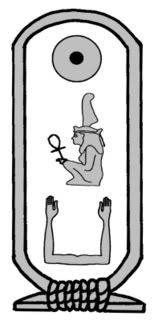 Makera was the prenomen or throne name of a woman whose office of God's Wife (some say Divine Adoratrice of Amen), which shared much of the iconography of the pharaohs and united Egypt during its Third Intermediate Period, around the time attributed to King Solomon. She was Makera Mutemhet (Mutemhet means, 'Mut, the mother goddess, is at the head,' or more succinctly, 'Mum Rules OK'). Josephus called the queen who was said to have visited Solomon, the Queen of Egypt and Ethiopia. The office had interests in Kush and later office holders were also called Mistress of Kush, whose capital at the time was called Saba or Sheba (later called by the Greek name 'Meroe'). Hence, we may have a contender for the title of 'Queen of Sheba'. There are more pyramids in The Sudan (formerly Kush) than in Egypt
|
|
|
|
Post by Tamrin on Jul 14, 2008 7:22:57 GMT 10
In Understanding the Tarot Deck: Being Fragments of a Secret Tradition under the Veil of Divination (1999, Citadel Press, Secaucus, N.J.), Arthur Waite wrote of this particular card under the section entitled “The Doctrine Behind the Veil", saying (pp.76/9): The High Priestess
She has the lunar crescent at her feet, a horned diadem on her head, with a globe in the middle place, and a large solar cross on her breast. The scroll in her hands is inscribed with the word Tora, signifying the Greater Law, the Secret Law and the second sense of the Word. It is partly covered by her mantle, to shew that some things are implied and some spoken. She is seated between the white and black pillars - J. and B. - of the mystic Temple, and the veil of the Temple is behind her: it is embroidered with palms and pomegranates. The vestments are flowing and gauzy, and the mantle suggests light - a shimmering radiance. She has been called occult Science on the threshold of the Sanctuary of Isis, but she is really the Secret [Albigensian] Church, the House which is of God and man. She represents also the Second Marriage of the Prince who is no longer of this world; she is the spiritual Bride and Mother, the daughter of the stars and the Higher Garden of Eden. She is, in fine, the Queen of the borrowed light, but this is the light of all. She is the Moon nourished by the milk of the Supernal Mother.
In a manner, she is also the Supernal Mother herself - that is to say, she is the bright reflection. It is in this sense of reflection that her truest and highest name in bolism [sic] is Shekinah - the co-habiting glory. According to Kabalism, there is a Shekinah both above and below. In the superior world it is called Binah, the Supernal Understanding which reflects to the emanations that are beneath. In the lower world it is MaIkuth - that world being, for this purpose, understood as a blessed Kingdom that with which it is made blessed being the Indwelling Glory. Mystically speaking, the Shekinah is the Spiritual Bride of the just man, and when he reads the Law she gives the Divine meaning. There are some respects in which this card is the highest and holiest of the Greater Arcana. In the first paragraph of above text I have inserted the word ‘Albigensian.’ My justification for doing so rests with an earlier statement by Waite in the same text, under his section entitled “The Veil and its Symbols,” saying (pp.8/11): One brilliant opportunity has at least been missed, for it has not so far occurred to any one that the Tarot might perhaps have done duty and even originated as a secret symbolical language of the Albigensian sects. I commend this suggestion to the lineal descendants in the spirit of Gabriele Rossetti and Eugène Aeoux, to Mr. Harold Bayley as another New Light on the Renaissance, and as a taper at least in the darkness[1] which, with great respect, might be serviceable to the zealous and all-searching mind of Mrs. Cooper-Oakley. Think only what the supposed testimony of watermarks on paper [2] might gain from the Tarot card of the Pope or Hierophant, in connection with the notion of a secret Albigensian patriarch, of which Mr. Bayley has found in these same watermarks so much material to his purpose. Think only for a moment about the card of the High Priestess as representing the Albigensian church itself; and think of the Tower struck by Lightning as typifying the desired destruction of Papal Rome, the city on the seven hills, with the pontiff and his temporal power cast down from the spiritual edifice when it is riven by the wrath of God. The possibilities are so numerous and persuasive that they almost deceive in their expression one of the elect who has invented them. But there is more even than this, though I scarcely dare to cite it. When the time came for the Tarot cards to be subject of their first formal explanation, the archæologist Court de Geblin reproduced some of their most important emblems, and - if I may so term it - the codex which he used has served - by means of his engraved plates - as a basis of reference for many sets that have been issued subsequently. The figures are very primitive and differ as such from the cards of Etteilla, the Marseilles Tarot, and others still current in France. I am not a good judge in such matters, but the fact that every one of the Trumps Major might have answered for watermark purposes is shewn by the cases which I have quoted and by one most remarkable example of the Ace of Cups.
I should call it an Eucharistic emblem after the manner of a ciborium, but this does not signify at the moment. The point is that Mr. Harold Bayley gives six analogous devices in his New Light on the Renaissance, being watermarks on paper of the seventeenth century, which he claims to be of Albigensian origin and to represent sacramental and Graal emblems. Had he only heard of the Tarot, had he known that these cards of divination, cards of fortune, card of all vagrant arts, were perhaps current at the period in the South of France. I think that his enchanting but all too fantastic hypothesis might have dilated still more largely in the atmosphere of his dream. W should no doubt have had a vision of Christian Gnosticism, Manichæanism, and all that he understands by pure primitive Gospel, shining behind the pictures. [1] “...a taper at least in the darkness…” Here Waite is alluding to the Waldenses, who motto is Lux Lucet in Tenebris, meaning: “a light in the darkness,” with the light represent on their emblem by a candle resting on a Bible, surrounded by seven stars. [2] “ …the supposed testimony of watermarks on paper…” For a summary of this work by Harold Bailey, see Margaret Starbird’s chapter entitled “Relics of the Hidden Church” which she also connects with the Tarot, in The Woman with the Alabaster Jar, (pp.89/116). Also of interest in this case are Corinne Heline’s works, The Bible & the Tarot, and Mystic Masonry and the Bible. For a fictional treatment of the Waldenses' use of Tarot see Piers Anthony’s Planet of Tarot triology ( God of Tarot, Vision of Tarot and Faith of Tarot). In another fictional work (Wilson, Robert C., 1989, Gypsies, Doubleday, New York, p. 75), we read: Between the flags and Neumann's cheerful amorality, Cardinal Palestrina began to understand Europe's cherished horror of Americans: they feared nothing. Europe's bastard offspring, a nation of Waldensians and Calvinists and freemasons and worse. A chaos of perverse beliefs, which they had the temerity to call freedom of religion. |
|
|
|
Post by Tamrin on Jul 14, 2008 7:23:25 GMT 10
Who Was SHE?The hypothesis that Desaguliers and others intended Asherah to be hidden in plain sight, as the key to the literal, genuine “secrets” of the 3°, stands or falls on its own merits. Secondary theories may be drawn as to their intentions in doing so; the antecedents, if any, of their theme; in which circles it was common knowledge and, why and at what point it was neglected. We have touched on the first three of these secondary theories and now come to consider the circumstances under which the allegorically lost “secrets,” were really lost. Maybe, just maybe, we witness the last gasp of masonic awareness of the role intended for Asherah in our ceremonies, through the character of Ayesha, Rider Haggard’s fictional She Who Must Be Obeyed. Haggard was a Freemason and, like his close friend and brother mason Rudyard Kipling, scattered masonic allusions throughout his novels. He was very interested in matters Egyptian and, in various novels through the figure of Ayesha, Haggard demonstrated a sound knowledge of Egypt’s High Priestesses of Amun (Divine Adoratrices) having been the effective rulers of Egypt, until retreating and establishing an enduring kingdom further south. Moreover, in Queen Sheba’s Ring, the protagonist is called Maqueda, as the original queen is called in Ethiopian traditions. Haggard has Ayesha mention having visited Solomon and he credits her with immortality but mention is made that some think She mostly remains hidden and adopts her successor, giving the appearance of continuity. Similarly the Divine Adoratrices remained celibate, adopted their successors and were each thought to be incarnations of the one entity, Isis. Ayesha's immortality is associated with what Haggard caled a pillar, entrusted to her (in this case, a pillar of fire). For fuller details, please read my address, “ Who Was She?," (written for Theosophical and Rosicrucian audiences). Haggard at Abydos If my supposition is correct, I suggest that, on one hand, Haggard’s fiction demonstrates his acquaintance with the essential details of Asherah’s place in the 3° and, on the other hand, shows this was no longer thought to be a matter of guarded solemnity. By then the lesson of religious tolerance had long been accepted, if not always followed, and, despite its eponymous queen, the Victorian Age was one in which, outside the realm of melodrama, few powerful women were taken seriously. Nevertheless, the Sublime Degree of a Master Mason continues to provide the same clues, whether recognised as such or not. See also: H. Rider Haggard
|
|
|
|
Post by Tamrin on Jul 14, 2008 7:24:07 GMT 10
The Masonic Marianne1. Depuis d'innombrables années Les Francs-maçons ont travaillé Pour bâtir une humanité Meilleure et plus éclairée. Afin que fleurisse la Liberté, Et que sur tous les continents Les droits de l'Homme soient respectés, Des Maçons ont versé leur sang. Since innumerable years
Freemasons have worked
To build a humanity
Bettered and more enlightened.
For freedom to flourish,
And that on all continents
The Rights of Man are respected,
Masons have spilt their blood. RefrainLiberté, Égalité Fraternité, La devise des Francs-maçons, Liberté, Égalité, Fraternité, Pour ces trois principes Toujours nous combattons, Liberté, Égalité, Fraternité, A jamais nous vous défendrons! Chorus
Liberty, Equality, Fraternity,
The Freemasons' watchwords,
Liberty, Equality, Fraternity,
For these three principles
Always we fight,
Liberty, Equality, Fraternity,
Never will we cease to defend you! 2. Défendons notre République Une, indivisible et laïque [/li][li], Liberté absolue de conscience Pour que règne la tolérance. Sous le signe de l'Égalité, Francs-maçons, ouvrons nos travaux. Luttant contre les iniquités, Faisons aimer nos idéaux. Let us defend our Republic
One, indivisible and secular [/li][li], Absolute liberty of conscience In order for tolerance to reign. Under the sign of the Equality, Freemasons, open our work. Fighting against iniquities, Making our ideals loved.[/right]Au refrain Chorus 3. Faisons le serment solennel De rechercher la Vérité Avec Sagesse, Force et Beauté, Jusqu'à l'Orient éternel. Que la plus grande Fraternité Règne entre tous les Initiés Afin que nous soyons des Frères, Frères et Sœurs dans tout l'univers. Taking the solemn oath
To research the Truth
With Wisdom, Strength and Beauty,
Until the East eternal.
May that most broad Fraternity,
Reigns between all Initiates,
That at last we be all brethren,
Brothers and Sisters in all the universe. Au refrain Chorus Liberté, Égalité, Fraternité! (Bis) Liberty, Equality, Fraternity! (twice) [/li][li] The translator notes that ‘secular’ (a negative term, meaning ‘not of religion, the clergy or things spiritual’) is a poor substitute for the positive term ‘laïque,’ which has no satisfactory English equivalence, (referring, in part, to ‘freedom of conscience’). While he has suggested ‘laic’ might be used, as this is also poorly understood, I instead recommend readers make themselves familiar with the French usage, central to the Republican and Masonic ideals of the nation. Thus, we read (Wikipedia, Laïcité): The conception of laïcité is based on the respect of freedom of thought and of freedom of religion. Thus, the absence of a state religion and the subsequent separation of the state and Church is considered a prerequisite of such freedom of thought. Laïcité is thus distinct from anti-clericalism, which actively opposes the influence of religion and of the clergy. Laïcité relies on the division between private life, to which its adherents believe religion belongs, and the public sphere, in which each individual, its adherents believe, should appear devoid of ethnic, religious or others particularities, and as a simple citizen equal to all others citizens. According to this conception, the government must refrain from taking positions on religious doctrine and only consider religious subjects from their practical consequences on inhabitants' lives.
|
|
|
|
Post by Tamrin on Jul 14, 2008 7:24:45 GMT 10
AfterthoughtsEtymology We have already touched on the Candaces of Kush, with their capital at Saba (later Meroë), bearing the title “Mistress of Kush” and seen how that is also a title of Isis, (the Greek version of the name "Au’Set" or the more archaic "Ashesh"), and is equivalent to the title “Queen of Sheba.” We may cautiously speculate that the shift from “Saba” to “Sheba” may have some etymological significance, further linking the queen to Asherah (perhaps already implied by the connection with “Isis,” as "Ashesh"). A’, as a prefix, may be used as a reverential exclamation, similar to the O’ in “O’Lord,” and a shift in suffix from “ra to “ba” is well within the normal range for cross language equivalence (with Ra being a sun god, the shift may also suggest a theological distinction). Similar speculation may suggest a connection between the names “Makeda” or “Makera” and “Ashera.” JezebelQuoteThe name Jezebel has come down through the centuries to be used as a general name for all wicked women.
In modern usage the name of Jezebel is used to as a synonym for a hussy or controlling whore, as in the title of the 1938 Bette Davis film Jezebel or the 1951 Frankie Laine hit "Jezebel". This image is epitomized by the phrase "painted Jezebel." The "painted" part refers to a line in II Kings, just before she is killed, where she puts on her makeup. While it is often negative in connotation, some embrace the image, as is evidenced by various lingerie designs named after Jezebel.
From a Christian point of view, the story of Jezebel has been used to refer to those who challenge evidence and belief in God. From a biblical and Christian point of view, a comparison to Jezebel would suggest that a person would be a pagan or an apostate. Despite Jezebel's reputation, her "sin" of apostasy appears to have been imposed retrospective, being well before the bloody religious innovations of Kings Hezekiah and Josiah. Instead, she is seen to be devoted to Asherah, as part of the long held religion of Israel. Her "sin," in allegedly organising the murders of Naboth and his sons, so as to acquire his vineyard adjacent to the royal palace, for her husband King Ahab, may well have been part of a smear campaign. After all, compulsory acquisition or resumption of property was generally a royal prerogative and to invoke later prohibitions and rights is an anachronism. Her alleged role in this act appears to have been the worst that could be said of her. Her daughter Athaliah reigned for several years as Queen Regent of Judah, before being deposed and murdered. See also: Women in Power BCE 1000-500SovereigntyRendering the "Queen of Sheba" as the "Queen of the Oath" is more than simply a literal translation of the word: It accords with the Levant having been the Egyptian province of Retjenu. Egypt still laid claim to the Levant and, upon reports of local kings establishing themselves upon 'Egyptian' soil, would have sought assurances that they still acknowledged Egypt's overall sovereignty. V.Rev. E.W. Heaton, in writing about Solomon's New Men: The emergence of ancient Israel as a national state[/i], (1974, Thames & Hudson, London), tells us (p.168): The Canaanite kings were allowed to retain thir thrones on condition that they submitted to vassal treaties which bound them in personal obedience to the Pharaoh. Despite the formal humiliation which this status entailed ('seven times on the belly and seven times on the back' [hard questions indeed, requiring seven-fold obligations] was the salutation expected by the Pharaoh), the vassal kings were, in fact, permitted a considerable degree of independence and and continued to recruit their own armies, engage in their petty wars and even reduce their royal neighbours to vassaldom. Please note that Solomon had earlier made affinity with Pharaoh (I Kings 3:1) and Josephus described the queen who visited him as being the Queen of Egypt and Ethiopia (Antiq. Bk.8, 6:5). Solomon's mother, who crowned him (Song of Solomon 3:11), was Bathsheba, meaning "Daughter of Sheba” or “Daughter of the Oath" (or more specifically a seven-fold obligation, Strong, #1339). If this name was more of a title than a personal name, David's lust for BathSheba may have been more political than carnal, with marriage to her serving, in the eyes of the Biblical writers, to legitimise his reign after establishing himself as king, in place of Saul. “Matrimony” means “the mother’s money.” With this in mind, an analogy may be drawn with Helen of Troy possessing the sovereignty of Sparta, which legitimised the reign of her husband Menelaus—while the marriage lasted—and would have passed to Paris, had he been able to claim it. From this perspective, the Trojan War loses it romance and becomes an overt political battle (Homer also told of Penelope being beset by suitors for her hand and, with it, the sovereignty of Ithaca, in the absence of Odysseus). Another analogy can be drawn with Parthenesis (meaning virgin), the mother of Pythagoras who according to legend, upon dedicating her child to the Pythoness, (the Oracle at Delphi), was renamed Pythia, meaning "daughter of the Pythoness," apparently signifying she had thereby become a priestess of the cult. Similarly, BathSheba, meaning "daughter of Sheba," may signify a priestess of that cult. Albeit, there is not a lot to go on but, if so, the subsequent visit by the Queen of Sheba to Solomon may be seen as an endorsement by the High Priestess of the same cult (and arguably Solomon's Suzerain), after he had been crowned by his mother (Songs 3:11)—a priestess of the cult. The Square and CompassesAs previously stated, Freemasonry derives from several strands, each having its own distinct history. Desaguliers and other chose appropriate stock onto which to graft their 3°. And, while not unique to Stonemasons, their emphasis on the square and compasses would have had special significance in a community where the language of heraldry was more widely understood than that of literature. The united square and compasses can be superficially seen as a union of male and female. More especially, they form the figure of a lozenge (a stylized form of the Vesica pisces), which in heraldry denotes the feminine. The same figure is repeated on the face of the trowel. The traditions of the operative Stonemasons included a particular reverence for the ‘great lady,’ as many cathedrals dedicated to Notre Dame testify. Indeed, the "united square and compasses" between two "pillars" (akin to the point within a circle being bounded by two grand parallels), can signify "A.M.", "under the Auspices of Mary" (as with the Sulpicians' crest)—with the crossbar of the "A," being at times concealed (see below).
|
|
|
|
Post by Tamrin on Jul 14, 2008 7:25:27 GMT 10
The Golden LegendThe Queen of Sheba features in the medieval "Golden Legend." The Mark° is reminiscent of that legend. In one version (Every, Christian Mythology, 1987, p.57), timber from the Tree of Life is rejected by the builders of the Temple and thrown among the rubbish and is then used to bridge a stream; the Queen of Sheba, recognising its virtue and destiny (to be used as the True Cross), refuses to step foot upon and desecrate it, (instead she walks through the stream). Following her advice, King Solomon orders the timber to be overlaid with gold and silver and placed as a lintel in the temple. Also in the context of the Mark°, we should perhaps bear in mind Psalms 144:12, " ... that our daughters may be as corner stones, polished after the similitude of the temple," the Latin Vulgate version of which was adopted as the motto of The Royal Masonic School for Girls. School Crest In another version of the legend, recorded in 1405 by Christine de Pizan, we read (II.4.3): “Several writings mention this woman’s wisdom and prophecies. They relate that while she was in Jerusalem and Solomon was leading her to see the noble temple which he had built, she saw a long board lying over a mud puddle which served as a plank to cross this mire. Thereupon, seeing this board, the lady stopped and worshipped it saying, ‘This board, now held in such great contempt and set under foot, will, when the time comes, be honoured above all other pieces of wood in the world and adorned with precious gems from the treasures of princes. And He who will destroy the law of the Jews will die on the wood of this plank.’ The Jews did not take this pronouncement as a joke but removed the board and buried it in a place where they thought it would never be found. But what God wishes to save is well protected, for the Jews did not know how to hide it so well that it was not rediscovered during the time of the Passion of our Lord Jesus Christ. And it is said that from this plank the Cross was fashioned upon which our Saviour suffered His death and passion, and thus this lady’s prophecy was fulfilled.” De Pizan, Christine, 1983 (org. 1405), The Book of the City of Ladies, Translated by Earl Jeffrey Richards, Picador (Pan), London Christine de Pizan, the author of the 1405 work, allegorically depicted with a trowel, building her City of Ladies, under the direction of reason personified, with crown.
|
|
|
|
Post by Tamrin on Jul 14, 2008 7:26:20 GMT 10
An Anachronism?If the general facts confirmed by modern research and outlined here were unavailable to Desaguliers and others at the time, then it would be anachronistic for one to suggest they acted on them. Basically, the essential points are spelt out in the Bible, while some of the finer points had long been current in learned circles. For instance, in 1405 Christine de Pizan wrote (I.12.1): “Please tell me where there was ever a king endowed with greater skill in politics, government, and sovereign justice, and even with such lofty and magnificent style as one can read about the most noble Empress Nicaula. For though there had been many kings of great fame called pharaohs in the vast, wide, and varied lands which she governed. And from whom she was descended, during her rule this lady was the first to begin to live according to laws and coordinated policies, and she destroyed and abolished the crude customs found in the territories over which she was lord and reformed the rude manners of the savage Ethiopians. This lady accomplished even more praiseworthy deeds than reforming the rough manners of others, according to the authors who speak of her. She remained the heiress of these pharaohs, and not just of a small land but of the kingdom of Arabia, Ethiopia, Egypt, and the island of Meroë (which is very long and wide and filled with all kinds of goods and is near to the Nile), which she governed with wonderful prudence. What more should I tell you about this lady? She was so wise and so capable a ruler that even the Holy scriptures speak of her great virtue. She herself instituted laws of far-reaching justice for governing her people. She enjoyed great nobility and vast wealth—almost as much as all the men who have ever lived. She was profoundly learned in the Scriptures and all fields of knowledge, and she had so lofty a heart that she did not deign to marry, nor did she desire that any man be at her side.” De Pizan, Christine, 1983 (org. 1405), The Book of the City of Ladies, Translated by Earl Jeffrey Richards, Picador (Pan), London
|
|

